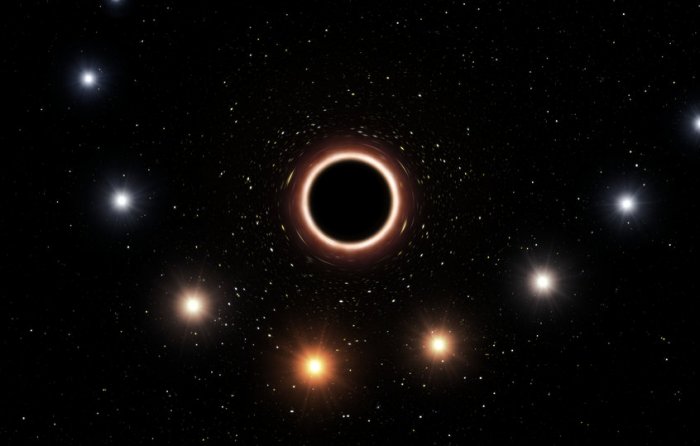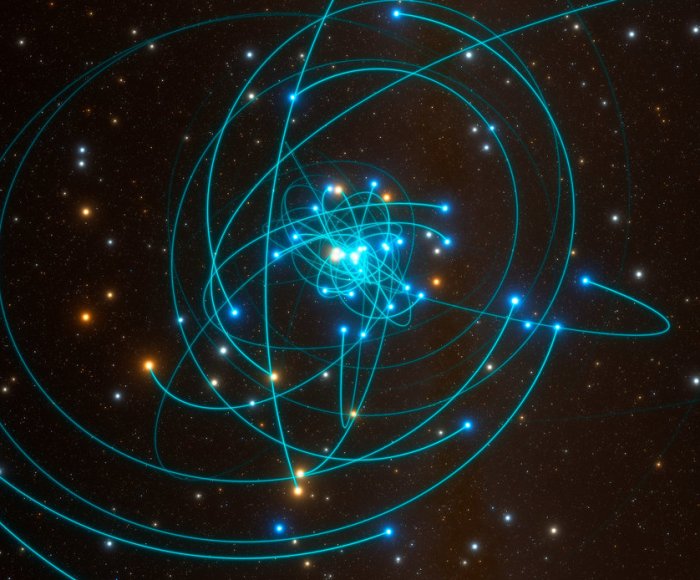MessageToEagle.com – Scientists at the Max Planck Institute for Extraterrestrial Physics (MPE) have now observed an effect that had been predicted by Albert Einstein with his general theory of relativity more than 100 years ago.
The discovery of this gravitational redshift represents the climax of a 26-year-long observation campaign using telescopes of the European Southern Observatory (ESO) in Chile.

The closest supermassive black hole to the Earth lies 26,000 light-years away at the center of the Milky Way. This gravitational trap, which has a mass four million times that of our Sun, is surrounded by a small group of stars orbiting around it at high speed.
This region, with the strongest gravitational field in our galaxy, is the perfect place to explore gravitational physics, and particularly to test Einstein’s general theory of relativity.
Using instruments such as Gravity, Sinfoni and Naco, belonging to the ESO’s Very Large Telescope, researchers have focused on a star called S2 and followed it on its orbit around the black hole, to which it came particularly close a few weeks ago.
The shortest distance between S2 and the black hole, on 19 May, was approximately 14 billion kilometers. Here, the star moved at a speed in excess of 25 million kilometers per hour – almost three percent of the speed of light. It takes about 15 years to complete its full orbit.

Compared data from Gravity and Sinfoni and previous observations of S2 showed results, inconsistent with Newtonian predictions, but they agree with the predictions of the general theory of relativity.
“This is the second time that we have observed the close passage of S2 around the black hole in our galactic centre. But this time, because of much improved instrumentation, we were able to observe the star with unprecedented detail resolution,” explains Richard Genzel, Director of the Max Planck Institute for Extraterrestrial Physics (MPE) in Garching near Munich, and head of the international team of scientists.
The new measurements clearly reveal an effect called gravitational redshift. Light from the star is stretched to longer wavelengths by the very strong gravitational field of the black hole, making it appear red. And this change in the wavelength agrees precisely with that predicted by Einstein’s theory of general relativity. This is the first time that the researchers have observed this deviation from the predictions of the simpler Newtonian theory of gravity in the motion of a star around a supermassive black hole.
“Our first observations of S2 with Gravity, about two years ago, already showed that with the galactic centre, we have the ideal black hole laboratory,” says Frank Eisenhauer from the Max Planck Institute in Garching, Principal Investigator of Gravity and Sinfoni.
During the close passage, even the faint glow around the black hole could be detected on most of the images.
“In this way, we could follow the star on its orbit to an extremely high degree of precision, and could ultimately provide evidence of the gravitational redshift in the spectrum of S2.”
MessageToEagle.com






